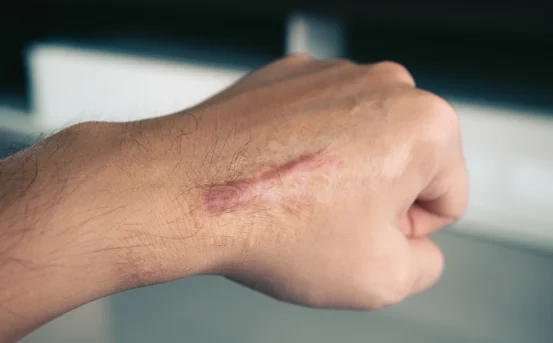Refractive Lens Exchange (RLE) surgery is an advanced vision correction procedure, primarily recommended for individuals who are not ideal candidates for LASIK or other laser eye surgeries. Unlike LASIK, which reshapes the cornea, RLE involves replacing the eye’s natural lens with an artificial intraocular lens (IOL) to correct refractive errors like presbyopia, hyperopia (farsightedness), and high degrees of myopia (nearsightedness).
Before a patient undergoes RLE, a thorough diagnostic evaluation is crucial to determine whether they are a suitable candidate for the procedure. But before a patient can proceed with RLE surgery, a thorough and precise diagnostic process must be conducted. Accurate diagnosis plays a pivotal role in determining whether a patient is a suitable candidate for the procedure and what type of intraocular lens would best meet their vision goals.
Why Proper Diagnosis Is Essential Before RLE?
The success of Refractive Lens Exchange surgery heavily depends on an accurate and comprehensive pre operative diagnosis. This ensures that the patient’s visual goals align with the outcomes of the surgery. Moreover, it helps rule out any contraindications such as ocular diseases or health conditions that may increase surgical risks.
A tailored diagnostic approach enables the ophthalmologist to recommend the most suitable type of intraocular lens, whether monofocal, multifocal, or toric, based on the patient’s unique eye anatomy and lifestyle needs.
Initial Consultation: Medical and Vision History Review
The diagnosis process begins with an initial consultation where the ophthalmologist or refractive surgeon collects a detailed medical history. This includes any past or present eye conditions, general health issues such as diabetes or hypertension, and current medications.
Additionally, the patient’s vision history is discussed. This includes refractive errors, use of corrective lenses, changes in vision over time, and any history of eye surgeries. Patients are also asked about their visual expectations whether they want to reduce dependence on glasses for distance, reading, or both.
Diagnosis of Refractive Lens Exchange Surgery
A thorough eye examination is the cornerstone of diagnosing suitability for RLE surgery. The following diagnostic assessments are typically conducted :-
-
Visual Acuity Test :- This standard eye chart test helps determine how well the patient can see at various distances with and without corrective lenses.
-
Refraction Assessment :- This test measures the refractive error of the eyes myopia, hyperopia, astigmatism, or presbyopia to evaluate the exact lens power required after the exchange.
-
Slit Lamp Examination :- A slit lamp microscope allows the eye doctor to closely examine the structures of the eye including the cornea, iris, and lens to detect any abnormalities or signs of disease.
-
Tonometry :- This test measures intraocular pressure (IOP) to screen for glaucoma, which could influence the surgical approach or disqualify a patient from RLE altogether.
Advanced Diagnosis of Refractive Lens Exchange Surgery
In addition to the standard eye exam, several advanced diagnostic imaging tests are used to assess the overall health and dimensions of the eye :-
-
Corneal Topography :- This test maps the surface curvature of the cornea and helps identify irregularities that may suggest conditions like keratoconus. A healthy corneal shape is crucial for optimal RLE results.
-
Pachymetry :- This ultrasound based test measures the thickness of the cornea. Although RLE doesn’t reshape the cornea, pachymetry is essential in detecting corneal health and screening for diseases.
-
Optical Biometry :- Optical biometry (e.g., using devices like the IOLMaster or Lenstar) is used to precisely measure the length of the eye (axial length), anterior chamber depth, and lens thickness. These measurements are critical for selecting the correct intraocular lens power.
-
OCT (Optical Coherence Tomography) :- OCT provides high resolution cross-sectional images of the retina and macula. This test is especially important for ruling out macular degeneration or retinal diseases that could compromise post surgical vision.
Pupil Size and Tear Film Analysis
Pupil size under various lighting conditions is evaluated, particularly for patients considering multifocal IOLs, since these lenses depend on pupil dynamics for optimal performance. Tear film analysis and a dry eye evaluation are also conducted, as dry eyes can affect healing and visual outcomes post-surgery.
Determining Candidacy for Refractive Lens Exchange
Based on the results of all diagnostic tests, the surgeon assesses whether the patient is an ideal candidate for RLE surgery. Some of the general eligibility criteria include :-
-
Age typically over 40, especially with signs of presbyopia or early cataract
-
Stable vision prescription for at least a year
-
Desire to reduce dependence on glasses or contact lenses
-
Absence of significant ocular diseases such as advanced glaucoma, retinal detachment, or macular degeneration
Patients with thin corneas, very high refractive errors, or early cataracts often benefit more from RLE than from laser refractive procedures like LASIK or PRK.
Choosing the Right Intraocular Lens (IOL)
Post-diagnosis, the ophthalmologist discusses the types of intraocular lenses available. Based on the diagnostic findings and patient preferences, the surgeon may recommend :-
-
Monofocal IOLs :- Best for fixed focus at one distance (usually far), with the need for reading glasses.
-
Multifocal IOLs :- Provide clear vision at multiple distances, reducing dependence on glasses.
-
Toric IOLs :- Designed to correct astigmatism in addition to presbyopia or hyperopia.
The selection of IOLs is a critical part of the diagnostic process and influences the visual outcome and patient satisfaction.
Patient Education and Informed Consent
An essential part of the RLE diagnostic process is educating the patient about the risks, benefits, and realistic outcomes of the procedure. The ophthalmologist ensures that patients have a clear understanding of what to expect before, during, and after surgery. Informed consent is obtained once all questions are answered.
Conclusion
Refractive Lens Exchange is a life changing procedure for those who seek permanent vision correction and are not suited for laser based surgeries. However, its success depends on a meticulous and thorough diagnostic process. From basic vision tests to advanced ocular imaging, every step helps determine the ideal candidate and customizes the surgical plan for optimal results.























